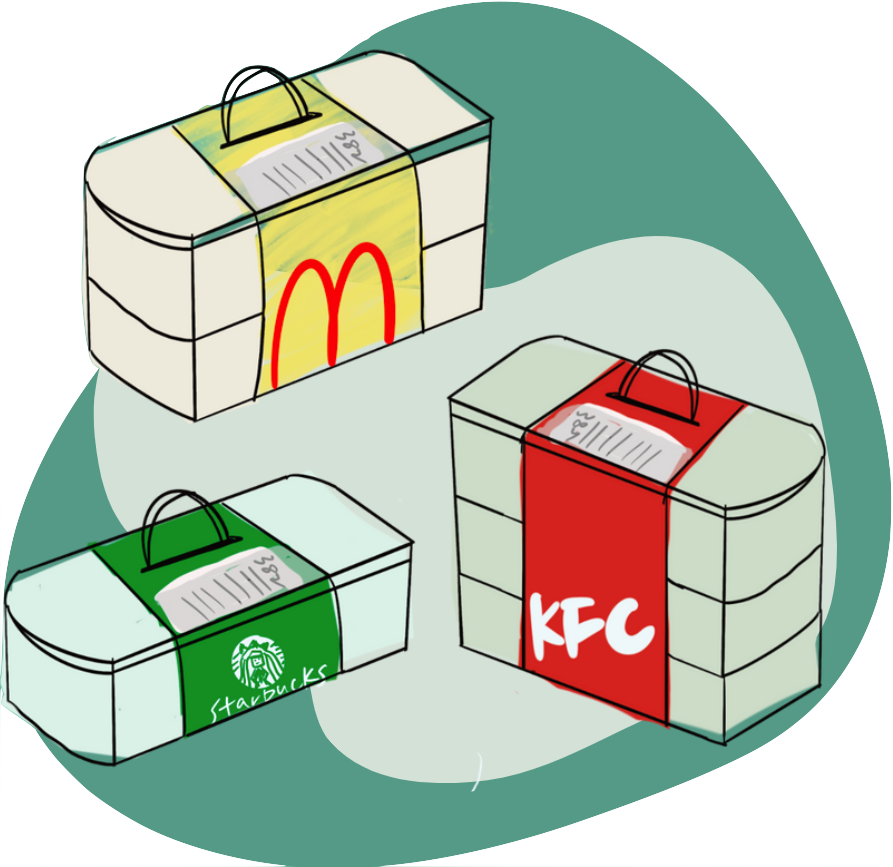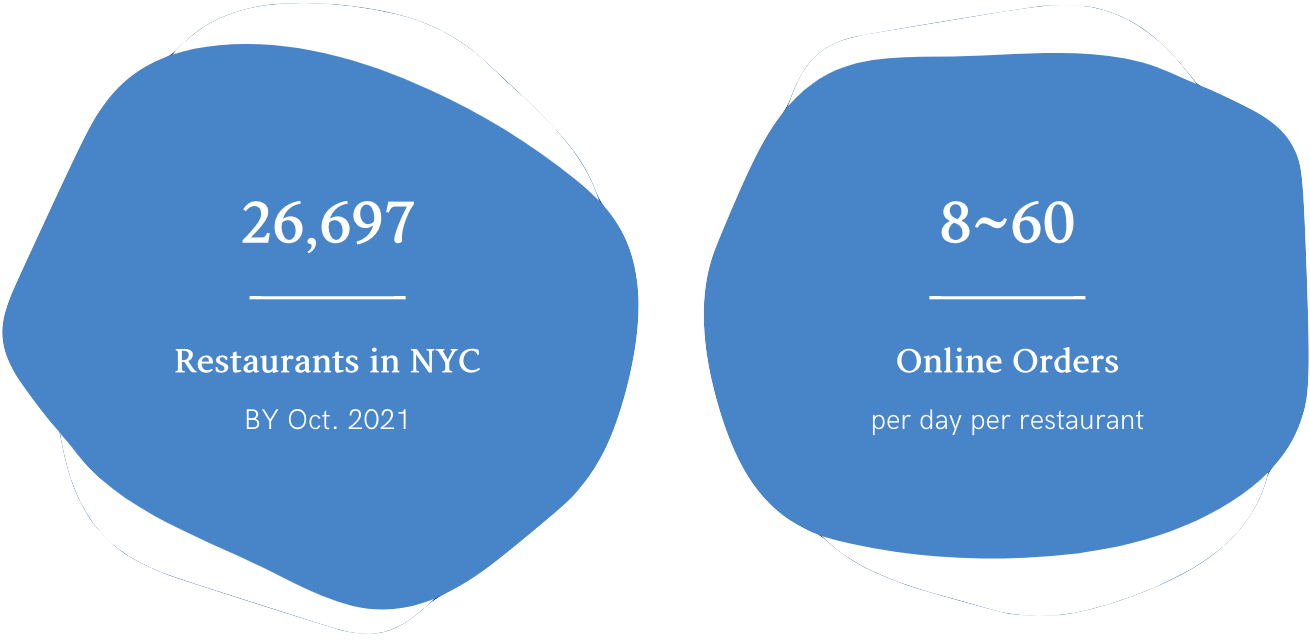The Perfect Box.
product design | design thinking | circular design
INTRODUCTION
A group project, for a class, which aims to tackle the abundance of take-out waste in New York City; utilizing tools such as user research, cultural probe, and prototyping, with the help of design principles such as circular design.
A group project, for a class, which aims to tackle the abundance of take-out waste in New York City; utilizing tools such as user research, cultural probe, and prototyping, with the help of design principles such as circular design.
Skills
User research, product design, prototyping, problem solving, illustration
Team members
Cyrene Chen, John Lee, Prince Boafo, and Sophie Xu
Deliverables
Prototype, rapid prototype, research and insights, user interviews, affinity diagram, stakeholder map, journey map
Tools
FigJam, Adobe Photoshop, takeout boxes, and 3D CAD software
Duration
12 weeks
FINAL PRODUCT
3D rendering by Prince
The Perfect Box
A shared delivery box system featuring recycling flexibility within the network of local restaurants in New York City.
Instead of getting a regular takeout packaging, customers can opt to receive this sustainable box instead. Upon finishing your meal you can return your box through stations inside NYC buildings and spread out through the neighborhoods, or you can give it to a nearby delivery person.
BACKGROUND
How might we redesign delivery containers and services to reduce takeout waste generated by NYC restaurant consumers?

Box illustrations by Cyrene
Meet Linda.
Linda is an engineering student studying in NYC. She is busy as a bee! She has such a hectic schedule that she hardly has time for a high-quality meal. Take a look at her story.

Linda illustrations by me
Upon coming back home late from class, Linda decides to order her favorite spicy chicken over rice
And when she picks up her food, she is overwhelmed by the amount of layers her order has.
Pain Point: Recyling food container in New York city requires you to wash the container. Linda decided to order food because she’s tired, but now she has to wash the dishes too?


Linda decides to throw away the boxes and cutlery and containers and go to bed instead of washing the dishes. Although, like most people, she regrets not recycling.
In New York City, you can get all kinds of food delivered at many times of the day—like pizza at midnight.
Undoubtedly, it has simultaneously become both a big part of culture and a contibutor to pollution.

System & Stakeholders: Where can we create an impact?

Product breakdown:
What are takeout wastes? What is in takeout bags? What are the elements we can ignore?

Journey Mapping

Consumer interviews: What do you do after you eat takeout?
Our group interviewed several of our peers and family. We synthesized our research result into an affinity diagram.

From that, we concluded the main four attitudes people has towards recycling are as follows:

From the intial user research, we created a problem statement
How might we reduce waste generated by NYC restaurant consumers from takeout?
Biggest Takeaways
From the research, the issues we find to be most relevant as well as dire are the following three things.

Insights

We need to tip the scale for people to choose sustainability over convenience and cost
After reflecting and synthesizing out research results, we revised our problem statement
How might we redesign containers, receipts and utensils to reduce takeout waste generated by NYC restaurant consumers?
Round Robin Exercise
In the round robin exercise, each members of our group came up with a different solution to which we prototyped
- A takeout box with filters inside
- A digital scanner that can give recycling instructions
- A receipt transfer service
- A cleaning robot (mine!)
- A takeout box service
Digitalizing receipts


Recyling trash scanner
Redesigning Takeout Packaging
We decided on creating some sort of box as our solution. We came up with two different designs.
1. Reboxery
a takeout box with a sheet inside that filters food from the box
2. The Perfect Box
a takeout box that has different compartments which distinguish different items and gives guidelines for recyling
The Perfect Box
A shared delivery box system featuring recycling flexibility within the network of local restaurants in New York City.
Inspired by the robot solution, we ask the question: if some people doesn’t want to do the work of recyling, why not allow them to not do it themselves?

Box illustrations by Cyrene

Instead of getting a regular takeout packaging, customers can opt to receive this sustainable box instead. Upon finishing your meal you can return your box through stations inside NYC buildings and spread out through the neighborhoods, or you can give it to a nearby delivery person.
Features
- Multi-layered depending on ordering
- Durable and reusable (recycable if need be)
- Brand sleeve with a handhold and a receipt bag
- Better thermal retentivity
3D Render
My teammate Prince, who studied engineering, created a more scientifically accurate render of the box using a CAD software.
3D rendering by Prince


Return Service UI
1. Choosing The Perfect Box
Customers can opt to choose the ‘sustainable delivery option” and return them afterwards for a discount.


2. Returning The Perfect Box
There are many ways to return The Perfect Box, which will be detailed in the next sections. In this example, however, it is returned through trade-in with your next food delivery.
3. Reediming Rewards
Lastly, you can redeem your rewards upon returning the perfect box to be reused!

Let’s bring back Linda.
Linda is an engineering student studying in NYC. She has such a hectic schedule that she hardly has time for a high-quality meal. Take a look at her story.

Upon coming back home late from class, we know that Linda will order her favorite spicy chicken over rice.
But then she sees a $5 coupon option through a sustainable delivery option.
But then she sees a $5 coupon option through a sustainable delivery option.
The delivery person comes bringing her food in a reusable box.

After finishing her meal Linda can place her used box in a return chute right in the apartment building!
She notified the app she ordered her food on that she has already returned the box, and she gets her reward! A delivery driver who was delivering food to her neighbor came picking it up.

What does it take to be sustainable?
The main method behind The Perfect Box is circular design which aims to eliminate waste and keep products to be used as long as possible.
- Box collected after used
- Washed and reused
- Minimum additional production
- Exceptions for Damaged & Lost
Who does this solution help?
Apartments
NYC and Trash Disposal Plants
Restaurants
Delivery Service
Us, people living in NYC
- Cleaner
- More recycled trash
- Better trash rooms and systems
NYC and Trash Disposal Plants
- More organized/recycled disposal allows more efficiency in processing them
Restaurants
- Save money in long term by re-using our box
- Advertisement opportunities
Delivery Service
- More job opportunities
Us, people living in NYC
- Incentives by using our solution
- Live in a cleaner city
I think the biggest thing that I struggled with in this project was that the scale and impact was too big. If we want to manage waste in New York, wouldn’t the way to do it was to actually create systemic change in the way waste are handled? Not just create a box. But then that would be much to big to tackle, trying to understand and restructure waste management systems in NYC will take more than 14 weeks and a group of college undergrads.
However, the thing that we can perhaps tackle as college students is to completely evaluate something small, something that we interact with more often in our daily life. With The Perfect Box I get to do that restructuring that I think is important to deal with climate change and waste, but in a smaller scale, perhaps leading to a more effective result.
However, the thing that we can perhaps tackle as college students is to completely evaluate something small, something that we interact with more often in our daily life. With The Perfect Box I get to do that restructuring that I think is important to deal with climate change and waste, but in a smaller scale, perhaps leading to a more effective result.




